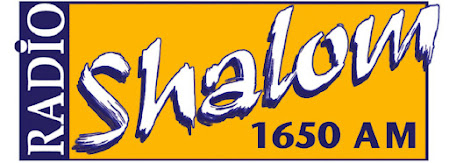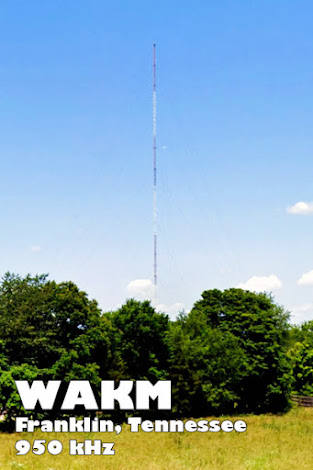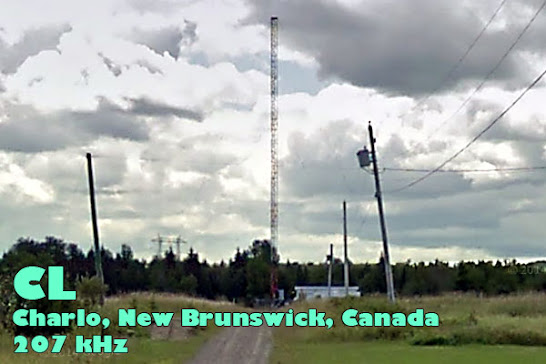My subscription to Life expired, but I still have a subscription to Mad.
Friday, December 31, 2021
And a Happy New Year!
Sunday, November 28, 2021
Colombia on 770
Two new loggings to report:
November 8 : WBRV on 900 kHz transmitting 52 watts from Boonville, New York, 179 miles to the northwest.
November 10: WABC (770 kHz) was off the air for maintenance for about an hour. Band conditions were poor due to a recent sun flare, yet I heard three very weak Spanish language stations and managed to identify one: JX (RCN Radio) in Bogota, Colombia, transmitting 100 kW 2555 miles to the south (photo above).
Both loggings were with the ICOM IC-R8600 receiver and Hy-Gain 18AVR/time WB-A vertical antenna (WBRV) and 120-ft Loop on Ground antenna (JX).
Sunday, November 7, 2021
Aurora (November 7 UTC)
Powered up the radio at midnight local time and conditions were good. Lots of DX on the LW and MW/AM bands, but nothing new to log.
Saturday, November 6, 2021
Fun on 1080
Friday at 2150 UTC, I turned the radio on and randomly tuned up the AM band from 860 kHz. When I arrived at 1080 kHz, I found no one there! I live 12 miles from the transmitter site of WTIC, a 50,000-watt IBOC station on 1080 and because of that proximity, I have never logged another station on 1080 except WTIC. I don’t know why WTIC was off the air, but here was an opportunity to log something new on 1080.
Initially, I heard nothing except splatter from WBAL on 1090. Gradually, a gospel station starting building strength, but I never heard a station ID, nor could I match it with any AM radio simulcasts on the Internet.
A second station appeared, a religious station with a preacher preaching. The signal eventually came up. There was no station ID, but I did match it exactly with WWNL’s Internet simulcast. WWNL is located in Pittsburgh transmitting 25,000 watts west-southwest of this location.
WTIC returned to the air at 2232 UTC with no mention as to why it was off the air,
It was fun while it lasted!
Earlier in the week, Wednesday at 0545 UTC, I logged a new one on 550 AM: WAME in Statesville, North Carolina, transmitting 53 watts, 586 miles to the southwest.
The WAME logging was better DX than the WWNL logging, but the WWNL logging was a once in a lifetime (so far) logging!
Tuesday, November 2, 2021
Halloween Loggings
WFME on 1560 kHz moved about 15 miles west from Queens, New York, to West Orange, New Jersey, and have been running a continuous test from their new transmitter site. In the evening, they are easy pickings and I entered them in the log at 0330 UTC on October 31. The new transmitter site is about 90 miles to the southwest.
Also on the 31st (at 0408), I logged a new navigational beacon: WG on 248 kHz in Winnipeg, Manitoba, 1300 miles to the northwest.
Both loggings were with the ICOM IC-R8600 and Hy-Gain 18AVT/WB-A vertical antenna (for WFME) and the 120-foot Loop on Ground antenna (for WG).
Friday, October 8, 2021
The Joy of Crimp-On Connectors
I had the pleasure of installing my first crimp-on coax connector today!
I purchased the crimp-on tools and connectors from Quicksilver at Hamvention, but had not needed to install any new connectors until today when I discovered a failing connector on the coax of my vertical antenna. (Funny thing about purchasing from Quicksilver – they are just a half hour down the road from here, but I have made all my purchases from them at Hamvention – just 12 hours down the road from here!)
Having never installed a crimp-on, I searched YouTube for a how-to video and found an excellent one, “How To Attach Crimped Coax Connectors” by Dave Casler, KE0OG. Dave had the same Quicksilver tools I had and he was installing connectors on RG8X coax, which was what I was trying to do, so the video was a perfect match for my task.
I watched the video one time, began to do it myself, fast-forwarding and rewinding the video as needed and I was amazed how easy it was to install the crimp-on!
Welcome to the 21st Century!
Saturday, July 31, 2021
Catch-Up
On Tuesday, I had robotic inguinal hernia repair surgery, so I have not been too wordy on the blog front lately.
I did log a new station on 1650 kHz: CKZW (Radio Shalom) transmitting 1 kW from Montreal, 269 miles to the north.
I also had a few relogs.
Radio Rebelde on 1620 kHz transmitting 5 kW from Guanabacca, Cuba, 1388 miles to the south-southwest.
WHRM on 90.9 MHz transmitting 81 kW from Wausau, Wisconsin, 871 miles to the west-northwest via E-skip.
WLFE on 909 MHz transmitting 100 kW from Cutler Bay, Florida, 1204 miles to the south-southwest via E-skip.
Various antennas were used with my ICOM IC-R8600 receiver.
Wednesday, July 14, 2021
Still More E Skip
On Wednesday, 90.9 MHz was open all morning and I logged four new stations.
1339 UTC: WOWB in Brewton, Alabama, transmitting 100,000 watts, 1057 miles to the southwest
1401 UTC: KLRC in Tahlequah, Oklahoma, transmitting 100,000 watts, 1224 miles to the west-southwest
1506 UTC: WKMD in Madisonville, Kentucky, transmitting 20,500 watts, 830 miles to the west-southwest
1611 UTC: WDCB in Glen Ellyn, Illinois, transmitting 5,000 watts, 780 miles to the west-northwest
Also on Tuesday at 0000 UTC, I logged a new TIS station on 1630 kHz, WQKY728, a Rhode Island DOT station in Cranston, Rhode Island, transmitting 10 watts 75 miles to the east
Receiver: ICOM IC-R8600, Antennas: ICOM AH-7000 discone, HyGain 18 AVT/WB-A vertical
Friday, July 9, 2021
Pipeline to Missouri
I have been monitoring 90.9 MHz often the last few days. There was a brief signal burst Thursday at 1521 UTC that lasted about 5 seconds, but just long enough to identify the station as a new logging: WMAO in Greenwood, Mississippi, transmitting 100,000 watts, 1117 miles to the southwest.
90.9 seemed dead otherwise, then about an hour later KTBG in Warrensburg, Missouri, appeared and became stronger over the next half hour – so strong that it sounded like a local. I logged KTBG for the first time on June 28, heard it again on July 2 and once again yesterday. So what’s with this pipeline to KTBG?
As usual, the receiver is the ICOM IC-R8600 and the antenna is the ICOM AH-7000 discone.
Monday, June 28, 2021
More E Skip
Around noon today, signals started popping up on normally quiet 90.9 MHz. And an hour later, I had three new entries in the log.
1600 Z, WJKV in Jacksonville, Florida, transmitting 41,000 watts, 920 miles to the south-southwest
1620 Z, KTBG in Warrensburg, Missouri, transmitting 100,000 watts, 1129 miles to the west
1646 Z, WAQV in Crystal River, Florida, transmitting 5,000 watts, 1021 miles to the south-southwest
I heard a few other stations, but could not identify them. One of the unidentified dubbed itself “Wild Radio,” but I have been unable to match that slogan with any 90.9 MHz radio stations. If anyone has a clue, please clue me in, too.
All were received with my ICOM IC-R8600 receiver and ICOM AH-7000 discone antenna.
Daily email delivery
In July, Feedburner, the email delivery system we use for daily email delivery of this blog will discontinue email delivery. So, if you subscribe to this blog via Feedburner, email delivery of the blog will stop.
I am looking for a substitute and will let you know when I find one.
Friday, June 25, 2021
What’s New
 |
I seldom QSL non-ham stations, but when WENR AM ran a DX test back in March, I sent a reception report and received this E-QSL a few days ago. |
Conditions were promising this morning when I tuned through the NOAA weather channels and heard WXM60 in Southard, New Jersey on 162.450. Normally, 162.450 is dead quiet here, so any reception on .450 bodes well for the FM band. And I began monitoring 90.9.
There were stations just above the noise on 90.9, but I could not identify anything. One station was stronger briefly and announced a Missouri area code phone number, but that was not enough information to identify it (the “Missouri” station was playing jazz and none of the 90.9 Missouri FM stations listed on Radio-Locator had jazz as their format).
And that’s all she wrote.
Friday, June 11, 2021
90.9 was jumping!
WBUR out of Boston was strong a couple of mornings and an unknown religious station was deep in the mud a couple of mornings (too deep to identify).
Friday morning, the band went wild! At times, there were two or three stations fading in and out at the same time. The E-skip lasted for almost three hours and I probably heard eight stations that I could not identify and four stations that I could identify (three new stations for the log and one relog).
1500 UTC: W215CJ in Tampa, Florida, 1096 miles to the south-southwest running only 25 or 38 watts!
1604 UTC: WOWB in Brewton, Alabama, 1058 miles to the southwest transmitting 100,000 watts.
1620 UTC: WJAB in Huntsville, Alabama, 876 miles to the south-southwest transmitting 100,000 watts.
1700 UTC: KUNI in Cedar Falls, Iowa, 971 miles to the west-northwest transmitting 94,000 watts (KUNI was a relog that I heard last summer)
All stations were heard with my ICOM IC-R8600 receiver and ICOM AH-7000 discone antenna.
Friday, May 28, 2021
LuG (Loop under Ground) Antenna
Saturday, May 1, 2021
May Day
Two things: new radio and new logging.
I purchased a new radio, an ICOM IC-7300 transceiver. And with it, I logged a new station, WEZR relaying ’80s oldies station WIGY on 780 kHz transmitting 18 watts from Rumford, Maine, 234 miles to the north-northeast. Antenna was the 128-foot Loop-on-Ground.
Next few weeks, I will be doing a lot of antenna work.
Thursday, April 1, 2021
The Night of Elevens
On the shelf above the IC-R8600 is my Grundig Satellit 750 receiver, so I tuned it to 92.1 and WLNG was loud and clear. (I was using the 750’s telescoping antenna.) There was no sign of the foreigners on the 750, but they were still loud and clear on the IC-R8600! It was a Twilight Zone moment!
I listened to the mystery station for awhile and successfully heard and recorded their station identification, but I could not make sense of it except for one word, “nacional.”
Last night, I tuned to 92.1 again and they were louder than Tuesday evening, but occasionally, there were fades and I could hear WLNG. By now, I assumed they were speaking in Portuguese and after doing some research on the Internet, I concluded that the station was W221CQ-FM transmitting 125 watts in Naugatuck, Connecticut, 11 miles to the south-southwest.
I actually have heard them before on the car radio when it was tuned to WLNG and was driving in a southerly direction. They would momentarily swamp WLNG, but the language barrier and brevity of the signal dissuaded me from trying to figure out who they were. Now they are in the log.
Wednesday night, I also logged WAMA on 1550 kHz transmitting 133 watts from Tampa, Florida, nearly 11 hundred miles to the south-southeast. The IC-R8600 and 128-foot Loop on Ground antenna captured that one.
Saturday, March 27, 2021
Two New This Week
Tuesday, March 16, 2021
Four New Loggings
Since my last post, I added four stations to the log.
February 17 at 2140Z, “Classic Country Radio" station WVTL on 1570 kHz in Amsterdam, New York, transmitting 1,000 watts, 110 miles to the north-northwest,
February 26 at 0420Z, navigational beacon LC on 376 kHz in Columbus (Pickerington), Ohio, transmitting 25 watts, 531 miles to the west-southwest
March 13 at 0458Z, WENR on 1090 kHz in Englewood, Tennessee, transmitting 1,000 watts, 757 miles to the southwest running a DX test for radio hobbyists
March 13 at 0458Z, religious station WILD on 1090 kHz in Boston, Massachusetts, transmitting 1,900 watts, 110 miles to the east-northeast
All stations were heard on my ICOM IC-8600 receiver and 128-ft Loop on Ground (LoG) antenna.
Tuesday, February 16, 2021
Out with the Old, In (the Log) with the New
WFME (50,000 watts on 1560 kHz in NYC) recently announced that it was going off the air. For days, it repeated a 15-minute loop of religious programming and an announcement about its impending demise.
Over the weekend, rumor was that they were pulling the plug Monday morning, so while I did this and that in the shack, I had the IC-R8600 tuned to 1560. After the loop played again at 11:15 EST, there was a brief generic station identification followed by dead air. WFME was gone.
I listened to 1560 for something new switching between the four antennas connected to the IC-R8600, but heard nothing. At sunset, it was a different story – there were two or three stations fighting it out and I managed to identify one of them as a new entry in the log: gospel music station WGLB in Elm Grove, Wisconsin transmitting 250 watts, 775 miles to the north-northwest.
I did not identify the other stations and will try again tonight.
Monday, February 15, 2021
Mid-February Report
WAKM on 960 kHz transmitting 75 watts, 848 miles to the southwest from Franklin, Tennessee.
WSSV on 1160 kHz transmitting 575 watts, 97 miles to the north-northwest from Mechanicsville, New York.
Both were heard with my ICOM IC-R8600 receiver, WAKM with my ICOM AH-7000 discone antenna and WSSV with my 128-foot Loop on Ground (LoG) antenna.
Nine years ago, I logged WPQH451 on my Subaru’s radio from my employer’s parking lot in Wallingford, CT. WPQH451 is a 10-watt traffic information station located in Rocky Hill, CT that I could never hear from home until recently. Don't know if they made some equipment changes or what, but now I can hear WPQH451 all the time 14 miles from my home station on Compounce Mountain in Wolcott, CT.
Wednesday, January 20, 2021
BZ, CL, LUA
Conditions were excellent last night and I added three navigational beacons to the log.
CL on 207 kHz from Charlo, New Brunswick, Canada, transmitting 1000 watts, 544 miles to the north-northeast at 0615 UTC.
LUA on 245 kHz from Luray (Luray Caverns), Virginia, transmitting 25 watts, 355 miles to the southwest at 0557 UTC.
BZ on 407 kHz from Statesboro (Bulloch), Georgia, transmitting 25 watts, 797 miles to the south-southwest at 0522 UTC.
The three were received with my ICOM IC-R8600 receiver and 128-foot Loop on Ground antenna.
Monday, January 18, 2021
WAZX and WLCO
Added two new stations to the log.
WAZX on 1550 kHz transmitting 50,000 watts from Smyra, Georgia, 833 miles to the southwest. Logged on January 9 at 0100Z.
WLCO on 1530 kHz transmitting 5,000 watts from Lapeer, Michigan, 537 miles to the west-northwest. Logged on January 12 at 0225Z.
Received both with my ICOM IC-R8600 receiver and ICOM AH-7000 discone antenna.
Longwave conditions have been very good to excellent lately, but I have not heard anything new.
Monday, January 4, 2021
WTIC's IBOC and WWCO's absence
Before turning in last night, I tuned the AM band to hear what I could hear and came up with a couple of surprises.
WTIC on 1080 kHz, 50,000 watts, 13 miles line-of-sight from my home, seems to have turned off its IBOC, which made reception on 1070 and 1090 kHz difficult, if not impossible. I noticed this when I turned to 1070 and could actually hear stations without having to use my receiver's filters to tune out WTIC's IBOC. I checked again this morning and the IBOC was still off, but it had returned when I checked again this afternoon. It was nice while it lasted.
Tuning further up the band, I noticed that 1240 kHz was absent WWCO's signal (1000 watts, 7 miles from my home). I cannot receive anything but WWCO on 1240 when it is on the air, but last night, there was a cacophony of stations on 1240 typical for a graveyard channel.
I decided to forgo sleep and take advantage of this rare opportunity and try to identify something. Briefly, WFTN popped up for identification – a new one for the log. (WFTN transmits 1000 watts from Franklin, New Hampshire, 142 miles to the north-northeast.)
I hung around for about 15 minutes more until WWCO came back to life and dominated 1240.
Receiver: ICOM IC-R8600, Antenna: 128-ft Loop on Ground (LoG)
 |
| WTIC's IBOC'd signal extends from 1065 to 1095 kHz! |
Saturday, January 2, 2021
New Year, New Logging
0155 EST Alarm clock sounds
0156 EST Power up receiver.
0156 EST Hear WHKW religious talk, a station in the mud playing music and some sweep tones. Discount sweep tones as some kind of anomaly because test was not supposed to start until 0200 EST.
0200 EST sweep tones
0202 EST Morse code too weak to decipher followed by clear code “WCPH WCPH”
0203 EST sequence of 5 or 6 tones rising in pitch
0204 EST Morse code too weak to decipher
0206 EST sweep tones
0207 EST slow Morse code “V V V … WCPH WCPH WCPH”
0209 EST sweep tones (strong enough to see on waterfall display)
0210 EST Morse code “V V V V V V D I (sic) WCPH WCPH…”
0211 EST Back to bed
Receiver: ICOM IC-R8600
Antenna: 128-ft Loop on Ground (LoG)
Location: Wolcott, CT, USA – 761 miles to WCPH transmitting 1000 watts from Etowah, Tennessee. Not a new state on AM, but a new station on AM – first new one in 2021!
UPDATE: I learned that the test started one hour earlier than originally scheduled, so the sweep tones I heard (and discounted) at 0156 EST were actually part of the test.





















